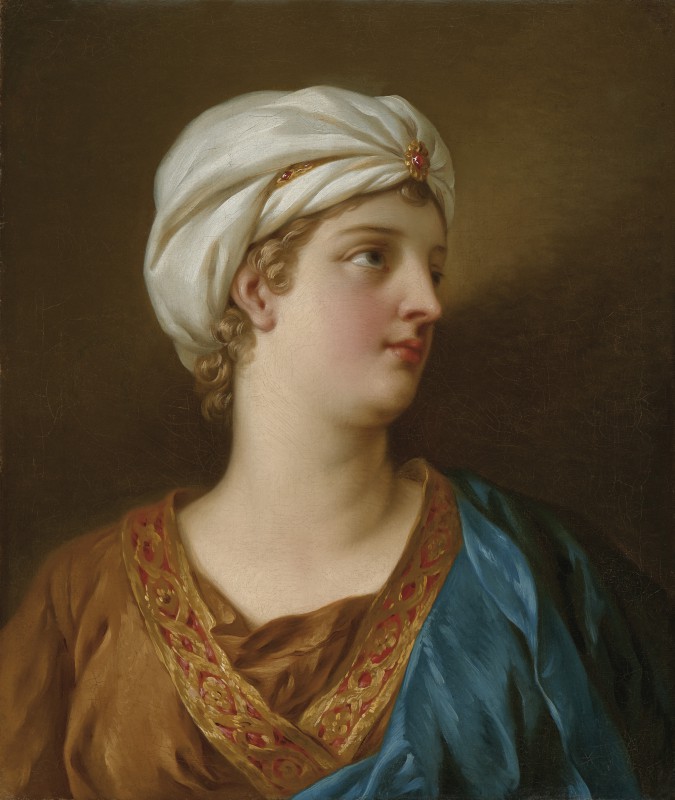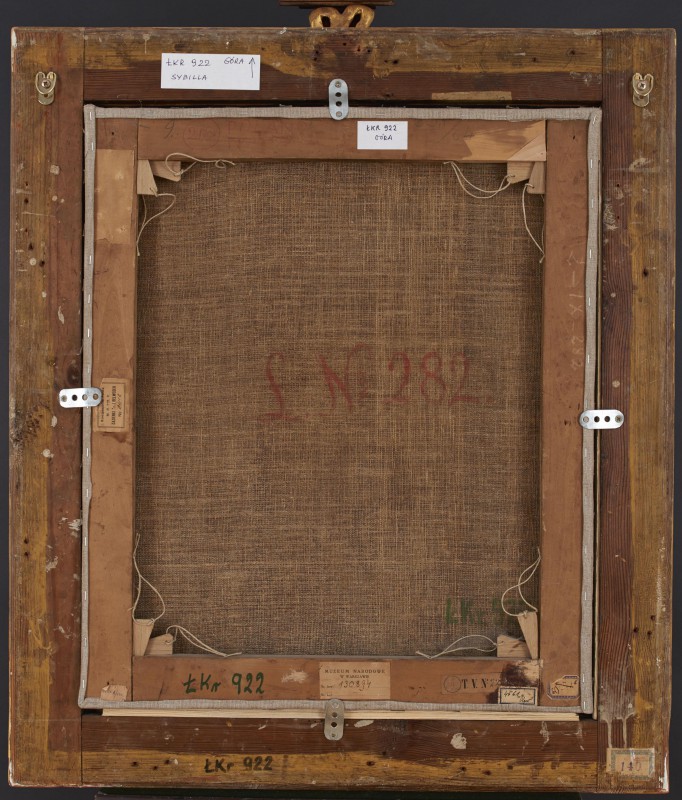Bust of a Woman in a Turban
- Date
- c. 1735
- Object type
- painting
- Technique
- oil
- Material
- canvas
- Dimensions
- 63,3 x 53,6 cm
- Location
- The Palace on the Isle - Portrait Room, ground floor
- Place of Origin
- Italy (Europe)
- Owner
- The Royal Łazienki
- Museum number
- ŁKr 922
In the catalogues of the Stanisław August collection the painting was described as the bust of a young woman ‘in oriental dress’ by Subleyras; this attribution has been sustained to this day.
Subleyras’ canvas on the same subject and with dimensions close to the Łazienki was mentioned on 2 May 1770 at a sale of the collection of the famous connoisseur Ange-Laurent de La Live de Jully (1725–1779) in Paris … and on 14 December 1778 at the posthumous sale of the painter Charles Natoire’s (1700–1770) collection, also in Paris …. In Odette Arnaud’s catalogue of Subleyras’ oeuvre, the Łazienki painting was published as being from the de La Live de Jully collection … . The Getty Provenance Index database records the Subleyras’ painting on sale in 1770 and 1778 as being the same one … .
According to Olivier Michel and Pierre Rosenberg … , however, in the de La Live de Jully and Natoire collections there were two autograph replicas of the same composition. One of them—although it is impossible to say which—ended up in the Stanisław August collection and is now the property of the Łazienki Museum, the second in the early 19th century was in the Louvre and is exhibited at the Musée Georges Garret in Vesoul … .
Since the publication of Andrei Somov’s catalogue [A. Somow, Katałog kartin nachodiaszczichsia w impieratorskom Łazienkowskom Dworce, Warszawa 1895] , who gave the painting the title Sybil, such a description of the subject was adopted in the literature. Stanisław Iskierski [S. Iskierski, Katalog galerii obrazów Pałacu w Łazienkach w Warszawie, Warszawa 1931] thought that Zofia Potocka, the wife of Szczęsny Potocki, had been portrayed as Sybil (she was known as ‘A beautiful Greek Woman’). Of course it is not the portrait of an actual person, but rather a testa di carattere, without doubt inspired by 17th-century depictions of the Sybil by Guido Reni, Guercino or Domenichino, which was obvious to 18th-century art lovers. [See D. Juszczak, H. Małachowicz, The Stanisław August Collection of Paintings at the Royal Łazienki. Catalogue, Royal Łazienki Museum, Warsaw 2016, no. 101, pp. 372–375.]



